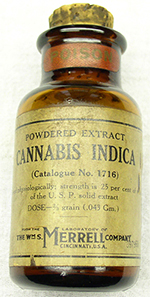
By: PAUL FASSA
It’s great to be using citrus fruits and other foods for vitamin C. But we should identify what supplement forms of vitamin C is proving therapeutic for several diseases, even as its merits are not publicly disclosed and often denied by the medical establishment.
Clearing Vitamin C Confusions
by PAUL FASSA
It’s great to be using citrus fruits and other foods for vitamin C. But we should identify what supplement forms of vitamin C is proving therapeutic for several diseases, even as its merits are not publicly disclosed and often denied by the medical establishment.Not only do mainstream health authorities deny ascorbic acid’s safety and efficacy, but so do too many among alternative health circles. There are those that say it’s unnecessary and even dangerous; that you get all the vitamin C you need from foods and you should never use a “synthetic” form of vitamin C.
Considering that humans have lost the gene that allows one’s body to manufacture vitamin C, a gene that most animals still retain, the source of vitamin C from only food needs to be reconsidered. The most commonly available vitamin C supplement is ascorbic acid.
A lot of ascorbic acid is manufactured from corn. Make sure you use non-GMO vitamin C. Many are concerned about ascorbic acid from China because of their high environmental industrial pollution. Google “China free corn free ascorbic acid” (without the quotation marks) to find the best sources of ascorbic acid.
You may be confused about the distinction between ascorbate and ascorbic acid, terms used alternately. The most common form of supplementary vitamin C is hydrogen ascorbate, which is ascorbic acid. It also comes in other alkaine forms such as sodium ascorbate and others. Vitamin C expert Dr. Thomas Levy advises against using calcium ascorbate. (Video at the end of this article).
Mainstream Oncology Researched Vitamin C as Adjunct for Chemo
A recent series of studies reported by Science Magazine online indicated the need to further research mega-dose vitamin C, usually delivered intravenously, as an adjunct for cancer treatments with normal treatment resistance due to KRAS or BRAF gene mutations.Half or more colorectal (colon), lung, and ovarian cancer cells contain those mutated genes that manage to repel chemotherapeutic attempts at targeting them. The laboratory and animal studies convinced researchers that there is potential for at least applying mega-dose vitamin C therapy with conventional chemotherapy to lead the charge at disabling those genes.
They feel the need for extended human trials is unnecessary since vitamin C has no lethal levels. The complete study report is here.
An earlier animal study using mega-dose vitamin C for ovarian cancer to be used with chemo also contributed to the impetus for exploring mega-dose IV vitamin C applications in conventional oncology, promising to lower the dosages of chemo and reduce its side effects.
With the high profits registered by conventional oncology’s use of chemo, the old expression “don’t hold your breath” is appropriate.
Vitamin C Used for Diseases Effectively and Ignored for Decades
Many, including alternative health readers and consumers, do not know the therapeutic value of vitamin C, especially mega-dose vitamin C delivered intravenously or even injected muscularly. These protocols have been used covertly to cure cancer without conventional chemotherapy.
Vitamin C is not FDA approved to cure anything, despite its efficacy and safety proven empirically for several, even life threatening diseases. Linus Pauling and others looked into Vitamin C for cancer circa 1971.
But at first they used orally ingested vitamin C with doses at bowel tolerance repeated often. Administering ascorbate by slow drip IV in high doses was begun a little later after Orthomolecular or Nutritional Medicine was created and practiced by a small number of MDs, naturopathic practitioners, and chiropractors.
The few who offered mega-dose IV vitamin C offered to cancer patients as an overall immune system booster, not as a cure, to avoid getting shut down. Naturally, the same service was offered for a broad spectrum of health disorders, especially viral infections, by only a few clinics nationwide.
Dramatic Vitamin C Cure Cases Willfully Ignored
Orthomolecular vitamin C successes, though impressive and numerous, were ignored by the FDA and the AMA. The unusual continual clinical successes of Dr. Frederick R. Klenner were ignored even as he cured polio cases during the late 1940s and 1950.
Dr. Klenner was a small town family doctor who made house calls in Reidsville, North Carolina and also delivered babies at the local area hospital.
For several years during the late 1940s and throughout the 1950s and beyond, Dr. Klenner successfully treated his patients with mega-dose vitamin C by injection or IV of many diseases including influenza, chicken pox, measles, pneumonia, and even polio. One cured polio victim was paralyzed in both legs.
“We’ve used massive doses of vitamins on over 10,000 people over a period of 30 years,” said Dr. Klenner, “and we’ve [he and his nurse wife] never seen any ill effects from them. The only effects we’ve seen have been beneficial.”
Dr. Klenner also stated, “Ascorbic acid is the safest and most valuable substance available to the physician” and that patients should be given “large doses of vitamin C in all pathological conditions while the physician ponders the diagnosis.”
And what about the AMA? Dr. Klenner took his case reports for polio to an Annual Session of the American Medical Association on June 10, 1949 in Atlantic City, New Jersey. His case reports were ignored.
Introducing Oral Liposmal Vitamin C
A more recent individual dramatic recovery story from high dose vitamin C made it into New Zealand’s TV version of “60 Minute News”. It was reported very fairly. You can view the news episode a few paragraphs down. It went viral on the internet, but wasn’t even poorly covered by our mainstream media.
The highlights include successful dairy farmer Alan Smith’s time in a New Zealand hospital and his family’s efforts to avoid the hospital’s decision to pull his life support plug. He was in a coma from severe viral double pneumonia complications from his bout with the Swine Flu, according to the official statement.
But the discovery of leukemia complicated matters even more. The hospital staff had decided to take him off life support. But one of the doctors suggested they at least concede to the family’s wish of trying IV mega-dose vitamin C.
The saga that followed is covered truthfully in this 18 minute NZ “60 Minutes” episode. Toward the end, around the 15 minute mark, you’ll see that the hospital’s stubborn refusal to continue IV vitamin C with the proper dosages resulted in the family bringing in oral liposomal C that resulted in dramatic results, including leukemia remission, with lower amounts.
What is Liposomal C How Come It’s So Effective Orally?
Only a few practitioners offer mega-dose IV vitamin C, which require office or clinical visits for expert treatment. It’s not advised to do it yourself, although some have. There could be complications that require expert medical attention to correct. Liposomal C is a do-it-yourself alternative.
Oral vitamin C is limited to smaller doses because of bowel intolerance. Although administering massive vitamin C by injection or IV gets a lot of ascorbic acid into the blood, not all of it is absorbed directly into the cells that require it.
The process of lipid encapsulation technology (LET) had advanced to the point of enabling supplement manufacturers, at first only with vitamin C then others, to break down the supplement compounds into tiny lipid particles from lecithin, at first from soy, but now sunflower lecithin is available.
Put simply, cell walls are made of fat. And water soluble compounds may roam freely in the blood but not so freely into the cells. Some sources say around 20 percent of the ascorbates in the blood gets into cells from IV vitamin C, but closer to 90 percent of lipid encapsulated ascorbates gets into cells because the lipid cell walls are susceptible to entry by the tiny lipids containing ascorbates.
A Japanese orthomolecular group experimented with Fukushima cleanup workers and discovered that mega-dose IV and liposomal C prevented radiation poisoning from occurring and even reversed radiation poisoning after it had occurred. Their study was not publicized despite their attempt to get the word out.
Dr. Thomas Levy, MD, has been a longtime orthomolecular practitioner of IV mega-dose vitamin C. He was surprised at the clinical results of manufactured liposomal C approximating much higher doses of IV vitamin C. Alan Smith’s recovery depended largely on 6 grams (6,000 mgs) of liposomal C daily after the hospital refused to match the 50 grams administered daily by IV.
Dr. Levy states that for all viral infections, both IV and liposomal applications are great. But so far only mega-dose IV C has demonstrate efficacy for cancer.
He explains in this article how liposomal C is very beneficial if it’s produced by a manufacturer with the technology. Dr. Levy maintains that home made liposomal C is better than just ascorbate capsules, but it doesn’t create 100% actual lipid encapsulated vitamin C particles.
You may wish to find an orthomolecular practitioner. Here’s a guide. If you wish to find liposomal C sources, simply Google liposomal C online.
Paul Fassa is a contributing staff writer for REALfarmacy.com. His pet peeves are the Medical Mafia’s control over health and the food industry and government regulatory agencies’ corruption. Paul’s contributions to the health movement and global paradigm shift are well received by truth seekers. Visit his blog by following this link and follow him on Twitter here
Source: http://www.realfarmacy.com/vit-c/
Resources:
http://news.sciencemag.org...
http://www.sciencemag.org...
http://stm.sciencemag.org...
http://preventdisease.com...
http://www.cancertutor.com...
http://www.doctoryourself.com...
http://www.doctoryourself.com...











 In
the case of epilepsy, the ability of cannabinoids to induce fundamental
healing is truly remarkable. The fact that traditional drugs fail so
profoundly, despite the years of research invested into them, is a
testament to how complex epilepsy is. Yet cannabis oil continues to work
in cases including Dravet syndrome, Doose syndrome, infantile spasms,
cortical dysplasia, and more. Not only to reduce seizures, but to
accelerate cognitive and behavioral development.
In
the case of epilepsy, the ability of cannabinoids to induce fundamental
healing is truly remarkable. The fact that traditional drugs fail so
profoundly, despite the years of research invested into them, is a
testament to how complex epilepsy is. Yet cannabis oil continues to work
in cases including Dravet syndrome, Doose syndrome, infantile spasms,
cortical dysplasia, and more. Not only to reduce seizures, but to
accelerate cognitive and behavioral development.


